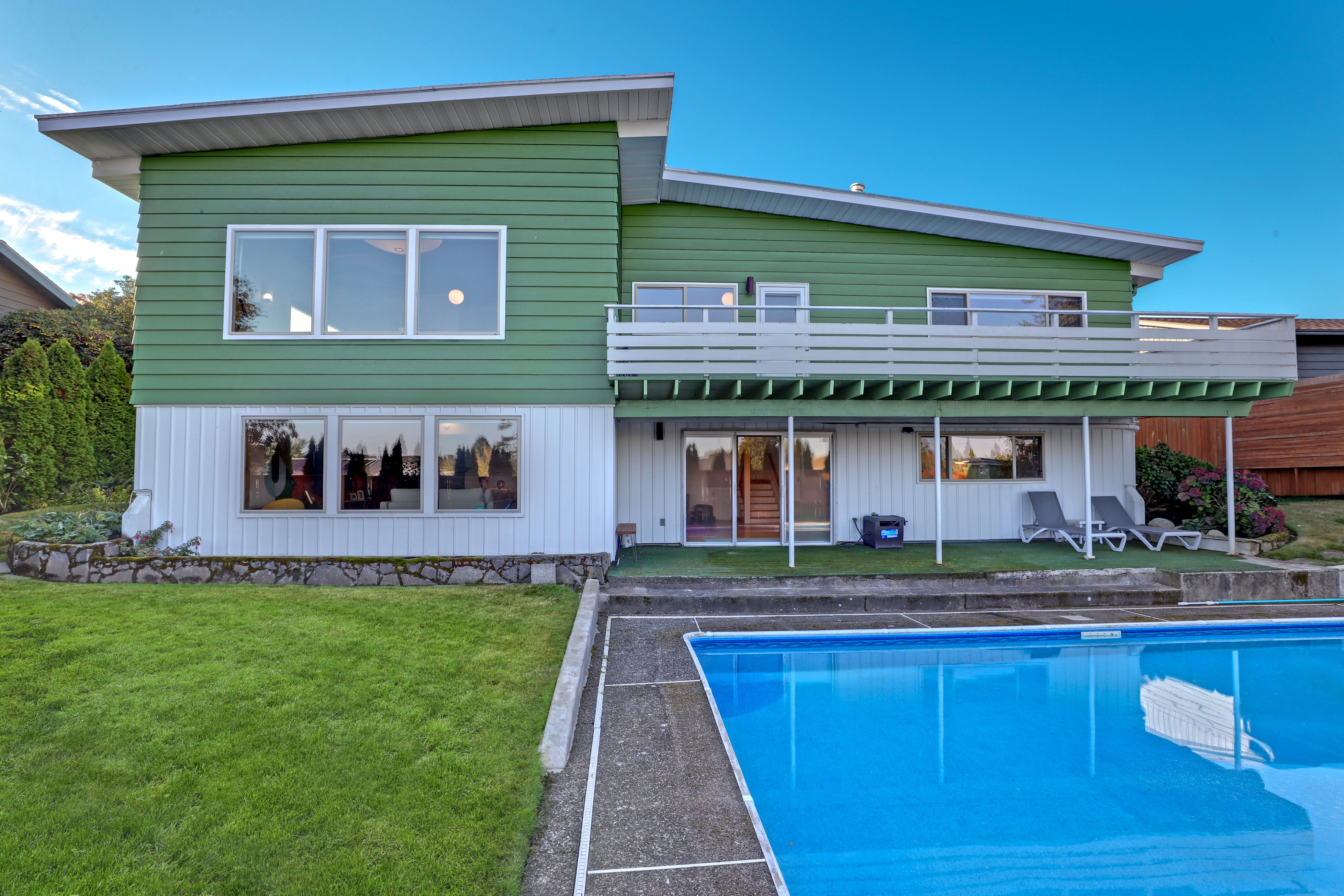Rummer Revival
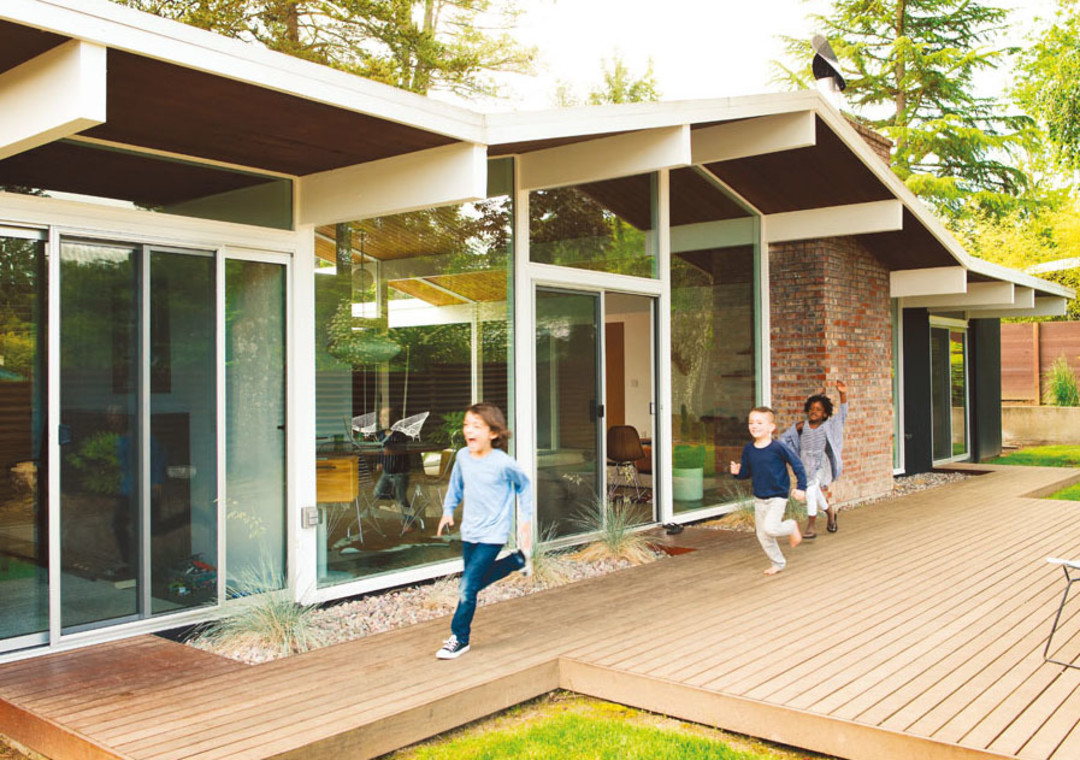
Image: Bruce Wolf
House hunters tend to have lengthy wish lists: highly ranked school districts, original wood floors, high ceilings, sprawling backyards. Tammy and John Mark Comer’s list was short. In fact, it had just one item: “We wanted a Rummer,” says John Mark.
Midcentury modern in style and known for an emphasis on indoor-outdoor living, Rummer homes were Oregon’s answer to California’s middle-class modernist Eichler homes—similarly characterized by their low-pitch roofs, central atriums, walls of windows, and post-and-beam construction. “There’s not a lot of midcentury architecture in this city,” says John Mark of his passion for Rummers. “We love the modern lines and all the glass and openness and light. They’re single-level, the atriums are great, and they’re really just fantastic for raising a family.”
Throughout the 1960s and ’70s, Oregon native Robert Rummer, who consciously set out to translate Joe Eichler’s California modernism for Portland and its suburbs, built nearly 1,000 houses. As their cultish appeal expanded, the market for these vintage gems grew heated in design-savvy Portland. “They’d sell their first day on the market with multiple offers,” John Mark explains. “It was bonkers.”
After scoping out a cluster of Rummers in a quiet area of Southwest Portland, where kids ride their bikes and neighbors have collective barbecues, the Comers—he’s a pastor and writer, she’s a stay-at-home mom, both from the Bay Area—dropped letters in every mailbox, asking if the homeowners would be willing to sell.
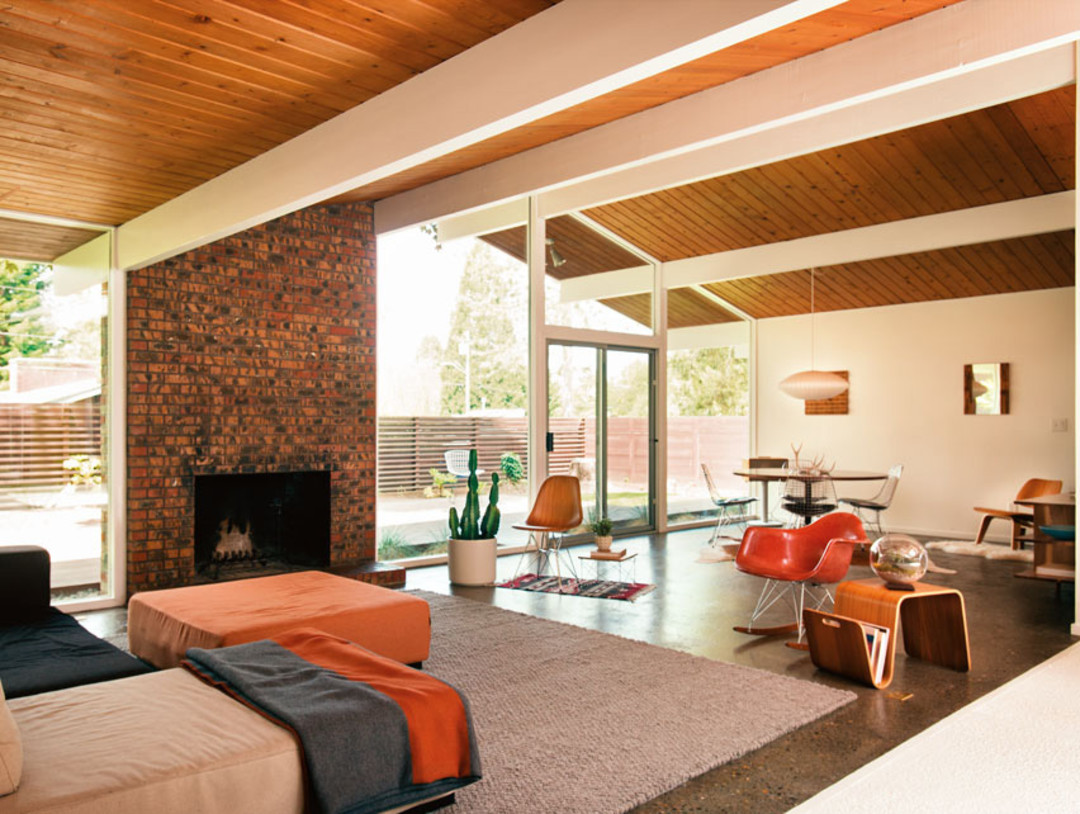
With elbow grease, new paint, and their own Northwest take on mid-century-modern style, the Comers refreshed a run-down Rummer into their dream family home.
Image: Bruce Wolf
In the process, they discovered one house that appeared abandoned. “The neighbors told us that people had been trying to buy it for years and not to even bother,” John Mark says. “But Tammy gave the owner a call anyway to ask.” The homeowner refused to sell, but Tammy continued to call once a month for nearly a year, slowly uncovering the owner’s story. After providing seven years of hospice care for her husband in the house, the homeowner had simply walked out the front door when he passed away, leaving food in the fridge, clothes in all the drawers and closets, even the vacuum still out. The prospect of wading through the painful memories of her husband’s death and their shared belongings was overwhelming. “But she started to like the idea of a family being raised here again,” says Tammy. “We finally met her, and she told us she liked us and would sell us the house—even though there were five other people waiting.”
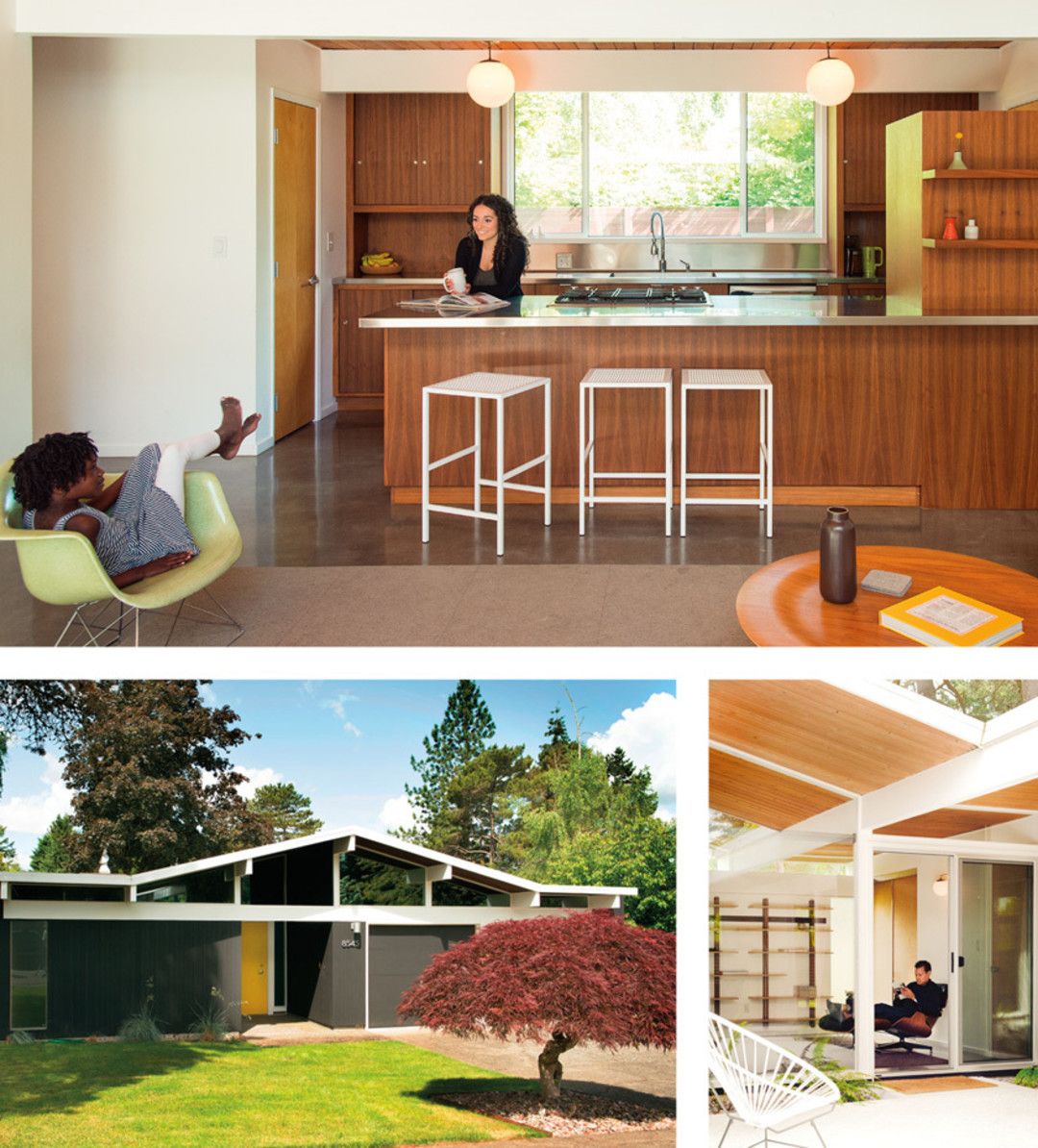
Image: Bruce Wolf
The house fulfilled the Comers’ short wish list—but years of neglect had taken their toll. “There was ivy growing up through a hole in the laundry room, the kitchen sink wasn’t working, and there were massive dry rot issues,” John Mark remembers. “But the bones were fantastic.”
The Comers went to work, gutting the house and filling two Dumpsters with furniture and detritus. Rebuilding the plumbing, fixing the walls and roof, and removing three layers of carpet, cork, and laminate from the concrete floors took three months. For the following year, the effort centered on restoring the house to its original state. Though the classic, 2,000-square-foot layout remained, the Comers installed new doors for better insulation, removed cheap wood laminate paneling from all of the walls, and remodeled the kitchen, where a hanging cabinet was falling off its hinges. John Mark acted as the general contractor, and he says that thanks to “some good love from friends, the money went a lot farther than it normally would have.” The total renovation cost under $90,000.
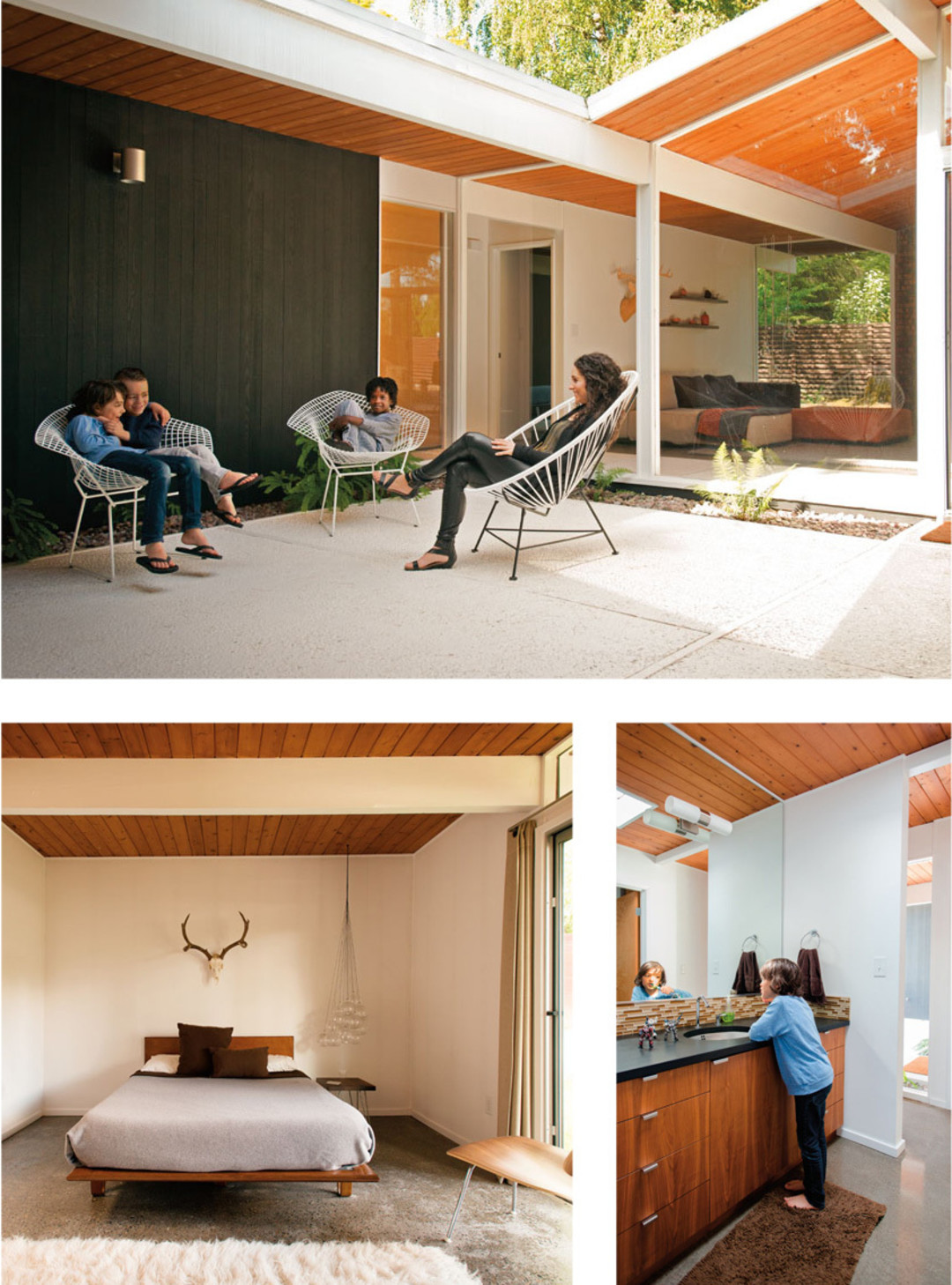
Paired with understated furnishings, an open layout, and a neutral color palette, the natural light streaming through the windows and skylights makes the suburban house live like a modernist loft.
Image: Bruce Wolf
Now, the Comers’ three children, Moses, Jude, and Sunday, stage Nerf gun battles in the living room while Tammy and John Mark look on from the kitchen. Sunlight pours in through the atrium skylight. Though the walls are all stark white, the rich wood of the walnut cabinetry and furnishings, along with a wall of glass framing the verdant lawn outside, infuses the home with warmth. Rustic flourishes—a Pendleton wool blanket, deer antlers, a sheepskin rug—remind visitors that they’re in an Oregon home, despite the Californian architectural antecedents.
“We tried to stay true to the spirit of the house, and it was all worth it,” says John Mark. “It’s such a well-designed home that just living in it feels nice.” With the renovation behind them, the couple insists they’d do it all over again.
Mid-Century Wishlist

Image: Nomad
Artful Pots: Since 1959, Heath Ceramics has made elegant earthenware in its Sausalito, California, factory. The Comers’ collection of Heath vases and pots in orange hues adds a warm pop of color and midcentury craft to their minimalist space. $10–196 at Canoe, 1136 SW Alder St
Single Surface: Birch veneer wraps in a continuous swoop in the Mag table by Eric Pfeiffer. Placed on its side, it’s a small table with a handy slot. Set it upright, and it’s little laptop desk. $199 at Design Within Reach, 1200 NW Everett St
Reading Cocoon: Vinyl weaves into a retro-mod take on a hammock in the Acapulco chair. It’s John Mark’s favorite seat in the house. “It’s the best outdoor reading chair ever,” he says. “Unless I go into bankruptcy, I’ll sit in that chair until I die.” $435 at Innit
Modern Lounger: Modernica’s classic Case Study daybed is a simple streamlined form set atop airy twirls of bentwood feet—the perfect perch for guests to either sit or sleep. $1,990 at Hive Modern, 820 NW Glisan St
Trophy Head: Hints of Eastern Oregon abound here, but unlike the actual deer head mounted in the bedroom, John Mark shopped for this wooden version rather than shoot it. Find similar at Restoration Hardware, 315 NW 23rd Ave
Fluffy Flooring: This sheepskin rug from Ikea is like a friendly pet underfoot: furry and soft, yet unlike Fido it never needs feeding. The Comers keep theirs under the Eames LCW chair in the living room. $29.99 at Ikea, 10280 NE Cascades Pkwy
Lofty Lamp: George Nelson’s sculptural bubble lamps have illuminated rooms since 1947. Metal ribs arc under plastic skin to create luminous shapes like the saucer that floats over the Comers’ dining table. From $269 at Hive Modern, 820 NW Glisan St
Prickly Plant: Nothing evokes the desert more than a saguaro cactus, with its prickly stem and reaching arms. The Comers have a small potted version, bringing a bit of cowboy culture into the Portland suburbs. Prices vary at Arizona Cactus Sales


